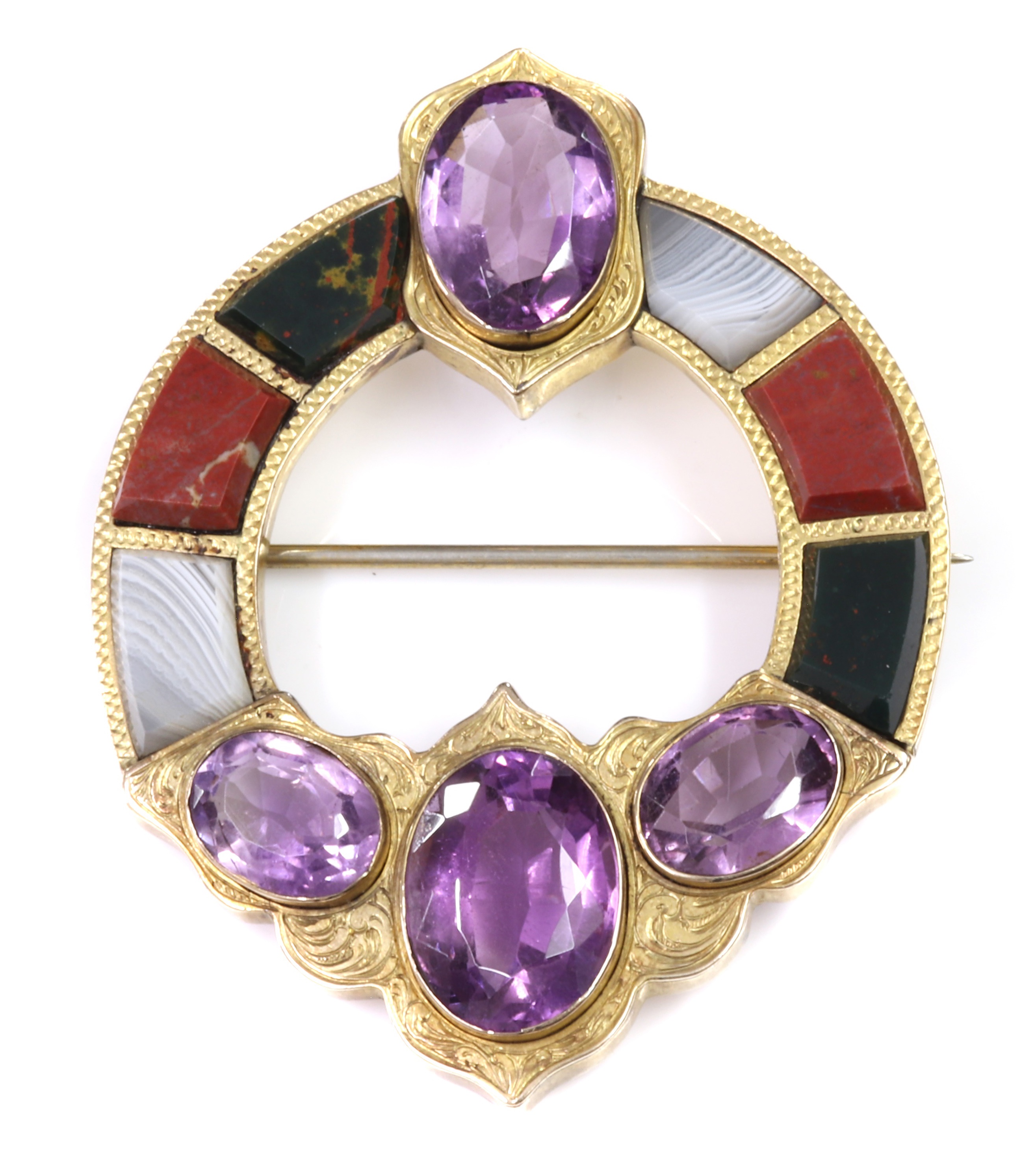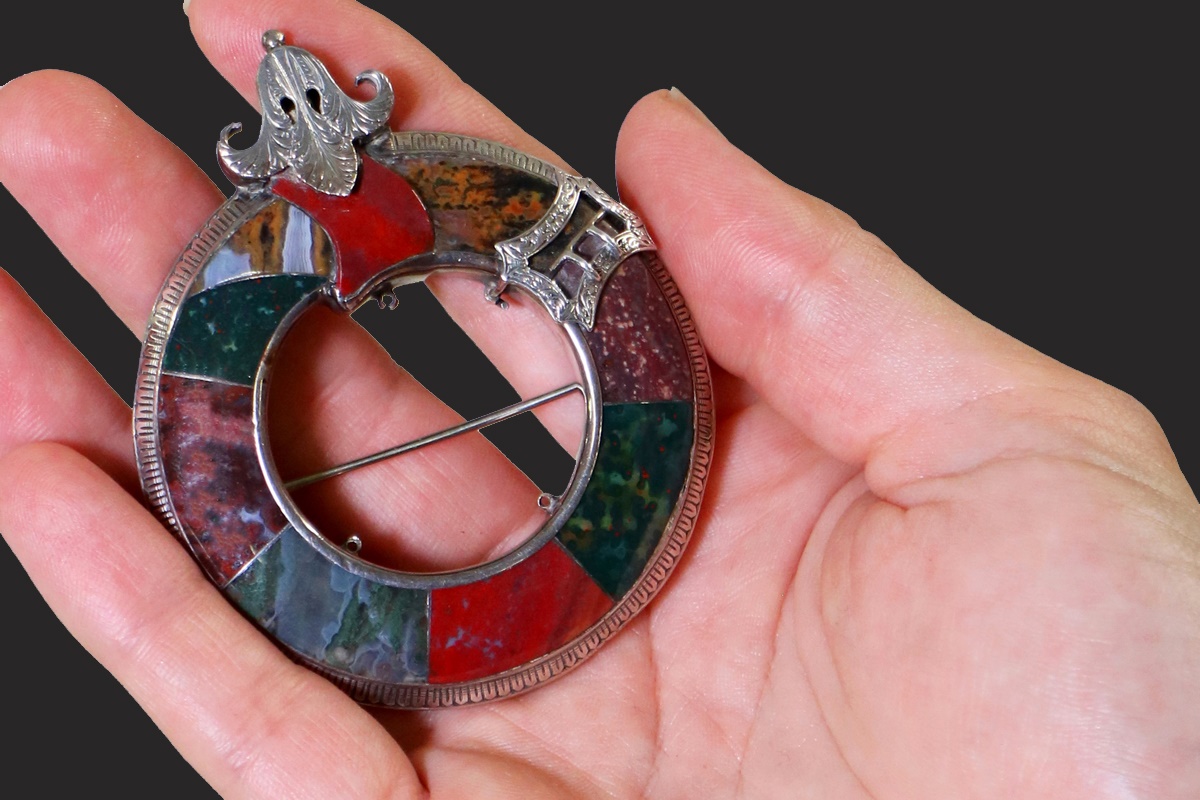

Traditional Scottish jewellery has captivated collectors for centuries, though recognition soared in the 19th century after it became a popular souvenir of Queen Victoria following her much loved trips to the Highlands.
2 November 2021
In the autumn of 1842, two and a half years after her marriage to Prince Albert, Queen Victoria took her first trip north of the border. They were both completely enamoured by the landscape and returned many times, culminating in the purchase of Balmoral Castle in 1852 (leased from 1847).
The story goes that during one of their early visits, Prince Albert found some pebbles on the banks of the River Dee in Aberdeenshire and had them polished and set into jewellery for his Queen. The aristocracy was a major influence on fashion in the 19th century and Queen Victoria’s love of all things Scottish propelled this distinctive type of jewellery to public view, sparking a trend that would spread across Europe and last for decades.

Lot 80 | A Scottish gold hardstone brooch - The Peter and Pat Crofts Collection
Estimate £400-500
So much was the hysteria for the style that Scottish jewellers were unable to keep up with demand and production had to be supplemented in England. By the mid-1800s, jewellers in other parts of Great Britain recognised the business opportunity and “Scottish” jewellery was soon being made in Birmingham and Exeter.
Typical examples from this period are characterised by native stones, specifically agates, amethyst, rock crystal, and granites, carefully arranged and inlaid in engraved settings of silver and gold, with intricate designs featuring Celtic knot motifs, flowers, leaves and other natural themes. Plaid brooches were particularly popular and one of the first designs to be snapped up by the masses due to being both beautiful and functional, securing heavy Victorian garments in place.

Lot 81 | A Scottish silver hardstone garter style circle brooch (sold together with a Scottish silver hardstone cello brooch) - The Peter and Pat Crofts Collection
Estimate £200-300
Jewellery symbolism played an important part in Victorian life, and certain motifs were highly sought after, including designs featuring buckles, used to represent eternity, loyalty, strength and protection, as seen in lot 81 in our auction of Fine Jewellery and Watches on Tuesday 30 November.
Scottish jewellery was at its height of popularity between 1845 – 1870 but remained fashionable until the turn of the century. Surviving pieces in good condition, such as those in our forthcoming sale, are just waiting to be discovered and treasured as Queen Victoria herself would have done.
A remarkable collection of 177 lots of rare and historic Bibles feature in our timed auction of Books, Manuscripts and Maps from 17-27 April, offering collectors, scholars and history enthusiasts a unique opportunity to own some of the most significant early English translations of the Holy Scriptures. The collection showcases centuries-old editions that played a pivotal role in shaping religious thought, language and culture.
15 April 2025
Ahead of his upcoming ‘retirement sale’ on 13–14 May, we caught up with the ever-charismatic Paul Atkinson to uncover some of the captivating stories behind the lots on offer.
11 April 2025
With styles and silhouettes endlessly evolving during the Victorian period, the continuous advancements in fashion offered women more choice and freedom regarding their attire. Sworders are delighted to present a collection of Victorian clothing in our upcoming Jewellery, Designer Handbags & Accessories sale, taking place on Wednesday 23 April.
9 April 2025